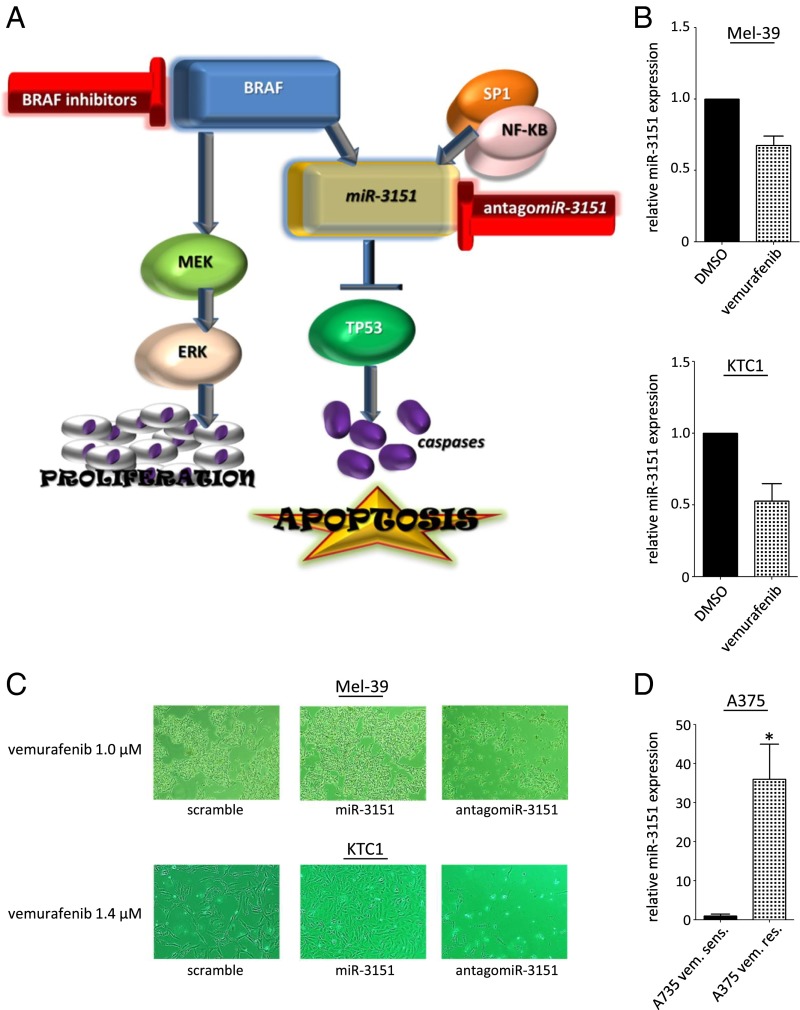Fig. 4.
Effects of combined BRAFmut and miR-3151 inhibition on MM and PTC cells. (A) Schematic depiction of the proposed BRAF–miR-3151–TP53 axis. Targeting miR-3151 and BRAF through antagomiR-3151 and BRAF inhibitors, respectively, is a potential treatment strategy for both MM and PTC. (B) Effects of vemurafenib treatment on miR-3151 expression in Mel-39 (1.0 μM vemurafenib; Upper) and KTC1 cells (1.4 μM vemurafenib; Lower) compared with vehicle. Vemurafenib treatment led to decreased miR-3151 expression in both MM and PTC cells. Three experiments, bars, mean ± SD. (C) Representative images of the differential effect of vemurafenib treatment on Mel-39 and KTC1 cells after forced miR-3151 expression or knockdown. Overexpression of miR-3151 decreased the sensitivity to vemurafenib treatment, whereas knockdown of miR-3151 increased the sensitivity to vemurafenib treatment. (D) Changes in miR-3151 expression after development of vemurafenib resistance (A375 vem. res.) compared with the parental cell line (A375 vem. sens.). Vemurafenib resistant cells showed increased miR-3151 expression compared with vemurafenib sensitive cells. Resistant A375 cells were maintained in 2 μM vemurafenib. Three experiments, bars, mean ± SD; *P < 0.05, two-tailed t test.

